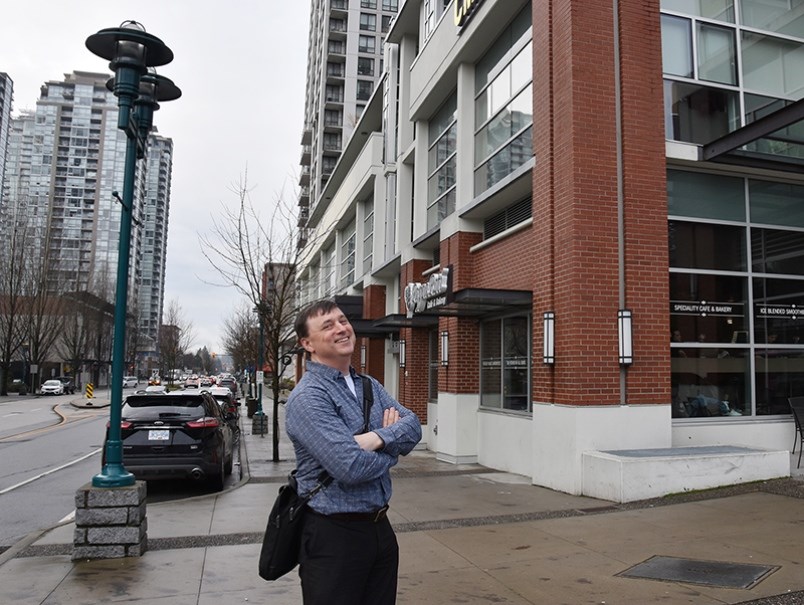If you could build a townhouse, apartment building or shopping centre that spews fewer CO2 emissions while helping to address climate change, would you?
That’s a question facing cities, developers and architects across the Lower Mainland as a million more people will need to be housed and have places to work over the next few decades.
But how can we accommodate the influx without adding to our greenhouse gas emissions?
One Coquitlam engineer asked that question and he’s now developed an online tool that helps architects and builders choose greener materials when they build their multi-million dollar, multi-phased projects, many of them slated for transit corridors in the Tri-Cities, Surrey, Burnaby, Vancouver and Richmond.
Phil Northcott, who worked for PMC Sierra for years before switching to develop sustainability solutions for businesses, said climate change is an urgent concern and everyone needs to pull their weight to reduce CO2 emissions — even builders and developers.
“If we have kids and care about them, now is the time to act,” said Northcott, "We have about 12 years to solve this. We don’t know when it will be irreversible, but you can be too late.”
His company, C Change Labs, has recently developed a free cloud-based calculator and database called EC3 that builders can use to evaluate materials for their CO2 emissions and choose those that reduce the impact of their construction activity.
Northcott told The Tri-City News this week he would like to see local governments, such as the city of Coquitlam, require builders to consider the carbon footprint of their building materials.
The so-called embodied carbon of building materials can differ greatly, depending on their manufacturing processes, and the EC3 searchable database, originally conceived by Skanska US and C Change, can show how much using information from certified environmental declarations.
Funded by the Charles Pankow Foundation, MKA Foundation, Microsoft, Interface, Autodesk, and an industry alliance assembled by by the University of Washington's Carbon Leadership Forum, the software has been used to build Microsoft’s campus in Redmond, Wash., and has also been adopted by Google, Salesforce, Interface, and several other U.S. firms in Washington and California.
Materials with the most embodied carbon are typically steel and concrete that release a lot of carbon during the manufacturing process, Northcott said, but the EC3 tool shows various options, some better than others, as well as the embodied carbon of laminates, insulation, wallboard and other materials.
Canadian companies have yet to use the EC3 tool, but Northcott hopes that will change soon as cities, developers and builders recognize the importance of reducing carbon emissions in construction.
The fact that the tool is free and combines a lot of data that would otherwise be time-consuming to assemble makes it a practical solution for those working in the building industry, Northcott said, and as people demand more action to fight climate change, he expects the building industry will adopt new practices to reduce carbon.
“We are citizens of cities that buy a lot of concrete and steel and so on and as citizens of this province we can make a really big difference working through our purchasing power rather than just our taxes and we can impact on globally,” said Northcott.
The initiative comes as the province of B.C. ramps up energy requirements, with new building code amendments leading towards the construction of passive buildings, that are net-zero, and touting its wood first initiative and early adoption of Portland-limestone cement that is lower in C02 emissions.
The province is also promoting LEED-4, the latest iteration of the Leadership Leadership in Energy and Environmental Design building rating system that now includes low carbon building materials where previous LEED levels, such as LEED Gold, does not.
Northcott says helping builders source greener materials is “low-hanging fruit” that can reduce carbon emissions quickly and relatively cheaply.
“This is one piece of the puzzle, just one, but it’s a piece that we can control and by changing these materials that are purchased we can affect the industry world wide. This is a way, instead of doing expensive things with carbon, to do cheap things with carbon reduction.”
— Diane Strandberg, Tri-City News



